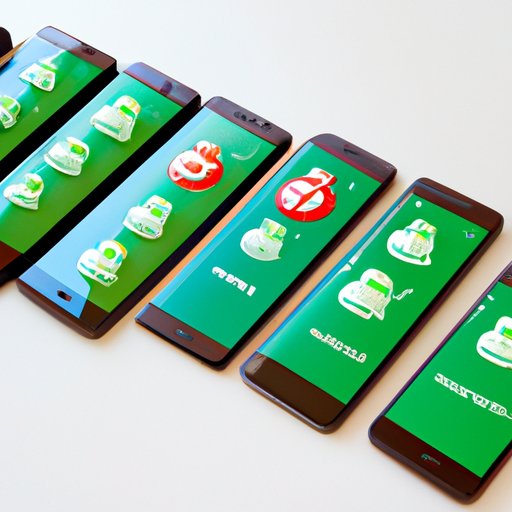
I. Introduction
Updating apps is an essential part of maintaining your Android device’s performance, security, and functionality. In this article, we’ll be exploring how to update apps on Android, as well as discussing the benefits of doing so, app update management, and common problems users may face while updating their apps.
II. How to Update Apps on Android Devices
There are several ways to update apps on Android, but the most common method is through the Google Play Store. Here’s a step-by-step guide:
- Open the Google Play Store app on your device.
- Tap the three horizontal lines at the top left-hand corner of your screen.
- Select “My apps and games.”
- You’ll be presented with a list of apps that need to be updated. Tap “Update all” to update all apps or update individual apps one at a time by tapping the “Update” button next to each app.
- Once the update has completed, the app will be listed under “Updated” and you can open it to start using the latest version.
You can also manually check for updates by doing the following:
- Open the Google Play Store app on your device.
- Tap the three horizontal lines at the top left-hand corner of your screen.
- Select “My apps and games.”
- If any updates are available, they’ll be listed under “Updates available.”
- Tap “Update” next to each app that needs updating.
- Once the update has completed, the app will be listed under “Updated” and you can open it to start using the latest version.
If you’re not familiar with these instructions, don’t worry, here are some visuals to help you through the process:

III. Benefits of Updating Apps on Android Devices
Updating your apps can bring many benefits, including:
- Improved performance: App updates can help optimize their performance, making them faster and more responsive.
- New features: App updates can introduce new and exciting features that enhance their functionality.
- Enhanced security: App updates often contain important security fixes that help protect your device from potential threats.
IV. App Update Management on Android Devices
Here are some tips on app update management:
- Automatically updating apps: You can choose to have your apps update automatically by going to the Google Play Store app and selecting “Settings” from the left-hand menu. Under “General,” select “Auto-update apps” and choose whether you want apps to update over Wi-Fi only or Wi-Fi and mobile data.
- Disabling unwanted updates: If you’d rather not update certain apps, you can disable automatic updates for those apps by going to the Google Play Store app and selecting “My apps and games.” Find the app you want to turn off automatic updates for and select “More” at the top right-hand corner of the screen. Then, select “Auto-update” and choose “Don’t auto-update apps.”
- Manage Apps feature: The Manage Apps feature in your device’s settings allows you to see all installed apps and their update statuses. You can use this feature to manually update individual apps, disable unwanted updates, or uninstall apps that you no longer need.
V. Common Problems while Updating Apps on Android Devices
Here are some common problems users may face while updating their apps and potential solutions:
- Failed updates: If an app update fails, try clearing the cache and data for the Google Play Store app in your device’s settings. You can also try restarting your device or uninstalling and reinstalling the app.
- Compatibility issues: Some apps may require a certain Android version to run, and if your device is not up-to-date, you may experience compatibility issues. You can check your device’s Android version by going to “Settings” and selecting “System” then “About phone.”
VI. Conclusion
Updating apps on Android devices is crucial for maintaining the performance, security, and functionality of your device. By following the step-by-step guides in this article, you can easily update your apps through the Google Play Store or manually check for updates. Additionally, app update management tips and potential solutions to common problems will help you ensure that your apps are always up-to-date and running smoothly.
If you’d like to learn more about Android devices and how to optimize their performance, check out our other articles on Android optimization and troubleshooting.




